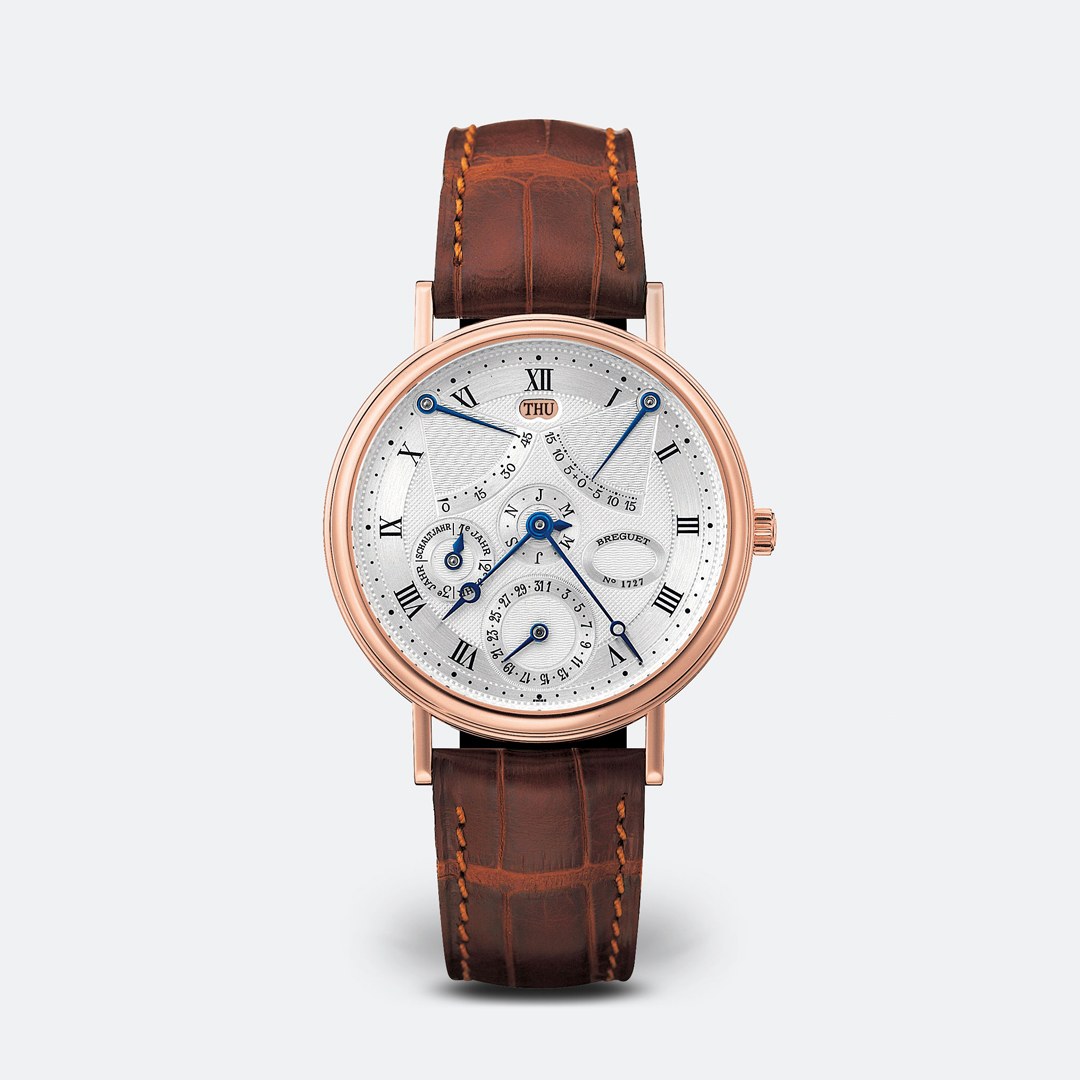
The Most Important Inventor in Watch History
Reading about watches can often feel like cracking open a textbook. Browsing—and even buying—means being barraged with inscrutable words and phrases like “tourbillons,” “perpetual calendars,” “minute repeaters,” and so on. So here, we’ll be breaking down the meaning, history, and importance of different watch terms. Welcome to GQ’s Watch Glossary.
In 1783, one of Marie Antoinette’s guards and secret admirers devised a way to make her fall in love with him. He had no doubt noticed the queen’s obsession with Abraham-Louis Breguet’s watches, of which she owned several, so he reached out to the watchmaker with a brief. Well, not so much a brief as a plea for the legendary watchmaker to make something so spectacular it would win the affections of the queen. The forlorn lover had the right idea: Breguet eventually delivered the most complicated watch in existence at the time, built with many of his original inventions, including the perpetual calendar, minute repeater, and equation of time. One teensy hiccup: Breguet was given no timeline, and he spent 44 years toiling on his masterpiece. It was finished in 1827, 34 years after Antoinette was sent to the guillotine and four after Breguet himself passed (non-guillotine related).
Even if the watch never reached its intended recipient, it hammers home Breguet’s mastery. He is referred to as the Leonardo da Vinci of horology, according to the Seiko Museum. Antoinette was a fan; so were Napoleon and King Louis XVI. Like da Vinci, Breguet built his reputation as an inventor. We’ve spent the past couple months nailing down definitions of watch terms for this glossary—and many of them are the result of a crazy idea Breguet had one day and then figured out. He flat-out invented or at least heavily contributed to the evolution of the tourbillon, automatic watches, the chronograph, the equation of time, the minute repeater, and the wristwatch itself. Let’s run through some of Breguet’s most important horological contributions.
The Breguet Classique “Grande Complication” with a perpetual calendar and equation of time
The Self-Winding Watch
Breguet’s first impressive breakthrough was the self-winding watch. In 1780, he invented a system with a weight that swung back and forth like a pendulum and put it inside a pocket watch, where it pushed springs that powered the watch. No longer did a monarch like Louis XVI have to choose between locksmithing, one of his greatest passions, and manually winding his watch. Moving about while, presumably, locksmithing, swung the weight inside the watch to build up power.
Minute-Repeater Gong
Minute repeaters—watch complications that audibly ring out the time—existed before 1783, but they were heavy and bulky because watchmakers stuck actual bells in them. Breguet invented a coil attached to a gong that created a sound that was both sweeter and much lighter than the alternative. Practically all modern minute repeaters still use a gong today. (1783 was a big brainstorming year for Breguet. Along with the gong innovation, Breguet also created the signature blue “moon tip” hands still used on his brand’s watches today.)
The Para-Chute
In 1790, Breguet invented a shock-absorption system so that watches could survive clumsy owners and drops to the ground. His “para-chute” invention relied on placing the most delicate parts of the moment at the end of a spring so that they could move without getting damaged in the event of a fall. Breguet was so confident in his invention that when asked to show it off at a party he hurled it to the ground and then passed it around to show it still worked. According to Breguet, the party’s host, M. de Talleyrand, said in the aftermath, “Does this devil Breguet always have to go one better?” This is how all good murder-mysteries movies start.
Article written by Cam Wolf #GQ












